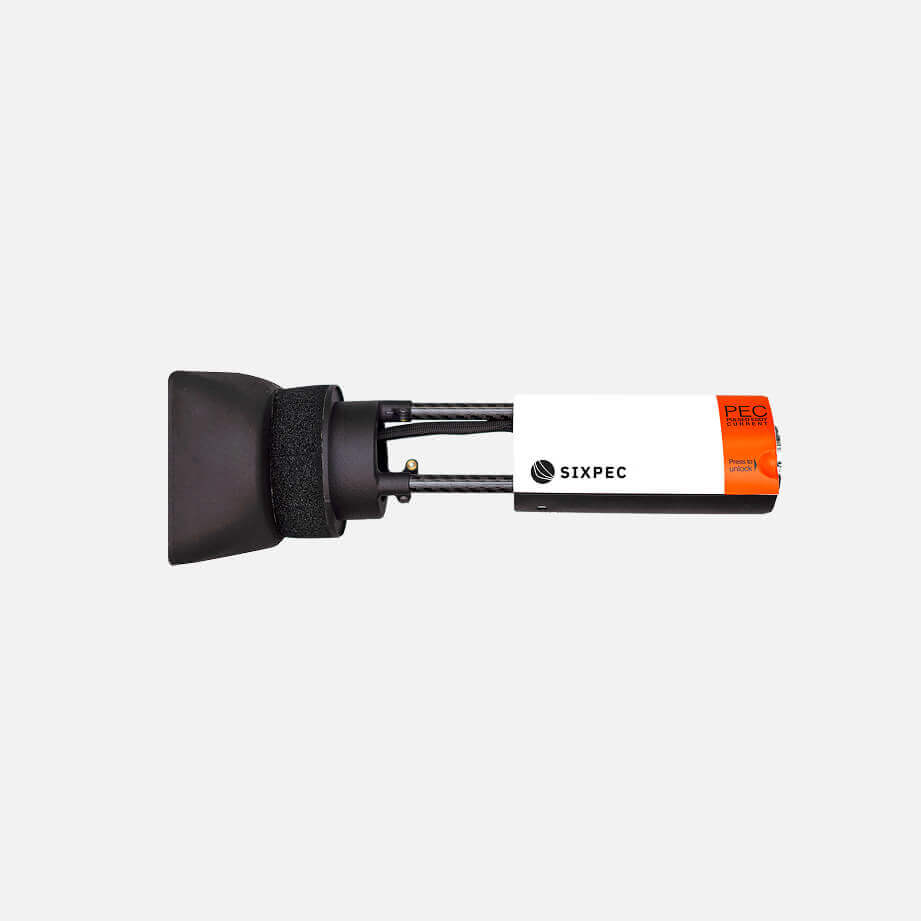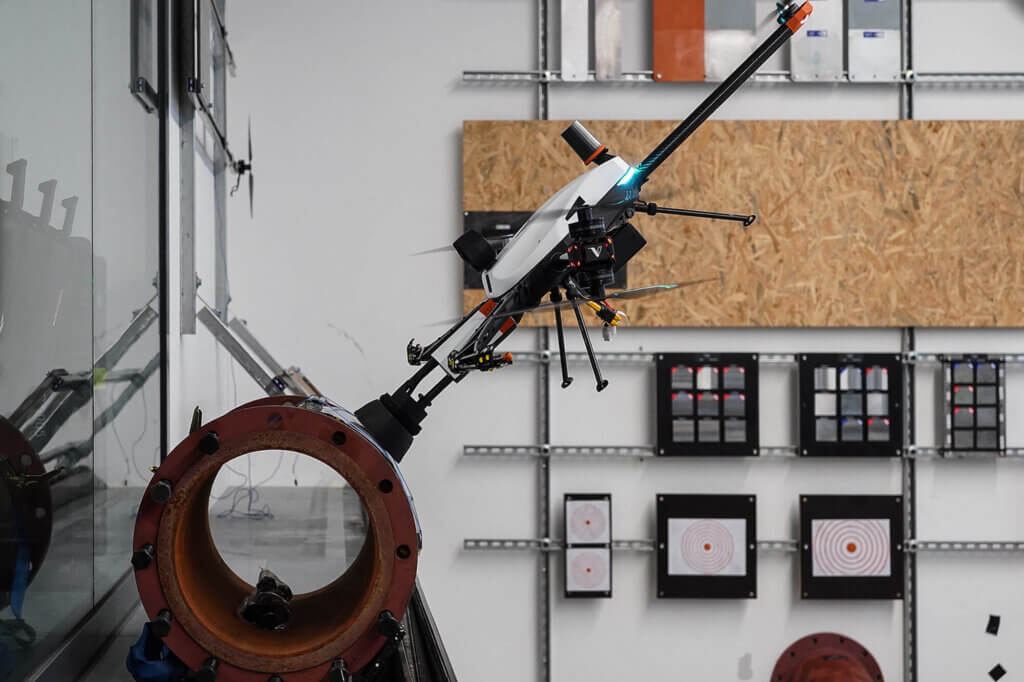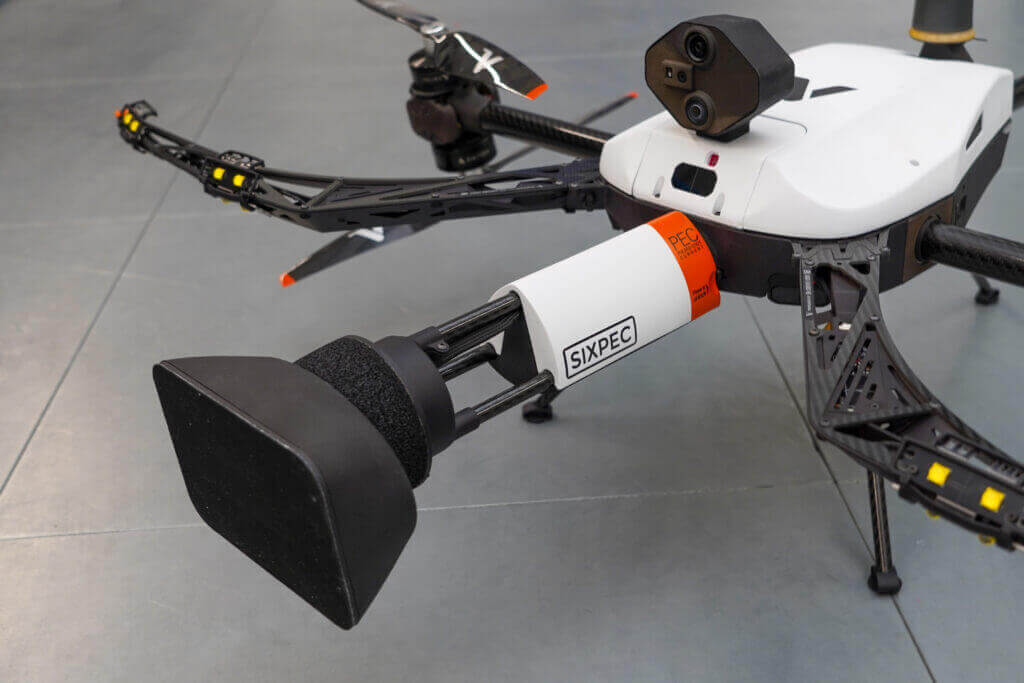![Pulsed Eddy Current (PEC): An In-Depth Guide [New for 2025]](https://cdn.voliro.com/wp-content/uploads/2025/04/voliro-pulsed-eddy-current-probe.jpg)
Pulsed eddy current testing is an advanced non-destructive testing (NDT) method used to detect corrosion and measure wall thickness in ferromagnetic materials—without removing insulation.
It works by emitting a short, controlled pulse of electromagnetic energy into a material and analyzing the resulting eddy current response.
Unlike conventional eddy current inspection, which typically requires direct contact and bare metal surfaces, pulsed eddy current testing can be performed through non-conductive layers like paint, fireproofing, or insulation. This makes it especially valuable for inspecting assets such as pipelines, storage tanks, and pressure vessels in environments where surface access is limited or removal of insulation is impractical.
Because it is fast, repeatable, and non-intrusive, pulsed eddy current testing is widely used in the oil and gas, chemical, power, and maritime industries to reduce downtime, improve safety, and extend asset life.
Pulsed eddy current inspection is based on the generation and measurement of electromagnetic responses in conductive materials.
A probe emits a short, high-energy pulse of electromagnetic energy into the material. This pulse induces eddy currents below the surface, which decay over time.
The decay rate is influenced by the thickness of the material. By measuring this decay, inspectors can identify areas of metal loss, corrosion, or thinning—without needing to remove coatings or insulation.
One of the major advantages of pulsed eddy current inspection is its ability to measure wall thickness through non-conductive layers.
The technology can inspect through coatings, fireproofing, and insulation up to several centimeters thick, making it ideal for applications where surface access is restricted or insulation removal would be costly.
At Voliro, we recently launched the first-ever drone-enabled pulsed eddy current instrument.
Called the Voliro PEC sensor, this new instrument brings advanced PEC technology to aerial inspections for the first time. Mounted to the Voliro T drone, the system enables inspectors to collect PEC data at height or in difficult to reach spaces—without putting personnel at risk or requiring costly temporary infrastructure.

Drone-based pulsed eddy current inspection is transforming how asset owners and service providers access hard-to-reach areas.
Traditionally, pulsed eddy current equipment required direct human access—often involving scaffolding, rope access, or elevated platforms. But with drone integration, those limitations are disappearing.

This innovation extends the reach of pulsed eddy current inspection to areas that were previously inaccessible or cost-prohibitive. The Voliro PEC sensor integrates seamlessly with the company’s existing drone platform, ensuring stability, consistent sensor pressure, and accurate signal interpretation—all critical for successful PEC applications in the air.
Learn more about the Voliro PEC probe.
Pulsed eddy current testing is widely used in industries where corrosion monitoring and wall thickness measurements are needed, but direct access to the surface is limited.
Because pulsed eddy current inspection can be performed through insulation, coatings, and fireproofing, it is a practical alternative to traditional contact-based NDT methods in many field environments.

In all of these scenarios, pulsed eddy current testing helps reduce downtime and inspection costs while improving safety and data coverage.
Both pulsed eddy current and traditional eddy current inspection are electromagnetic non-destructive testing (NDT) methods used to evaluate the condition of metal structures.
However, they differ significantly in how they operate and what they are best used for.
The biggest difference between the two is in accessibility. Pulsed eddy current is ideal when insulation or coatings cannot be removed, while eddy current inspection offers higher resolution for detecting small surface defects when direct access is available.
Here’s a comparison to clarify their strengths and limitations:
| Criteria | Pulsed Eddy Current | Eddy Current Inspection |
|---|---|---|
| Flaw Detection | Best for subsurface flaws and wall loss | Best for surface and near-surface cracks |
| Surface Requirements | Can inspect through coatings and insulation | Requires bare, clean metal surface |
| Couplant Needed | No | No |
| Frequency Range | Low-frequency pulsed signals | High-frequency continuous waveforms |
| Best Use Cases | Corrosion under insulation, wall loss on insulated piping or tanks | Crack detection on uncoated tubing, weld inspection |
Pulsed eddy current equipment is made up of several integrated components that work together to perform reliable thickness measurements through insulation.
These tools are engineered for accuracy, portability, and use in demanding industrial environments.
A typical PEC unit includes all of the above, often integrated into a ruggedized, field-ready system for use in complex inspection settings. Portable versions may be handheld or mounted to automated platforms, depending on access and scope of the inspection.
One of the most innovative applications of pulsed eddy current equipment is integration with drones.

In this setup, the probe and processing unit are mounted to a UAV, allowing for pulsed eddy current inspection at height or in confined spaces—without scaffolding, rope access, or shutdowns.
This improves inspector safety and enables rapid data collection in areas that are traditionally difficult or dangerous to reach.
While pulsed eddy current is a valuable tool for non-destructive testing, it’s important to understand where its capabilities taper off. No single method fits every scenario, and PEC is no exception.
Here are some of the most common pulsed eddy current limitations to consider during inspection planning:
Effective use of pulsed eddy current testing requires specialized training to ensure accurate data collection and interpretation.
Technicians must understand both the theoretical and practical aspects of the method to perform reliable inspections in the field.
Pulsed eddy current training ensures technicians are qualified to perform inspections with confidence—maximizing the technology’s potential while minimizing errors in the field.